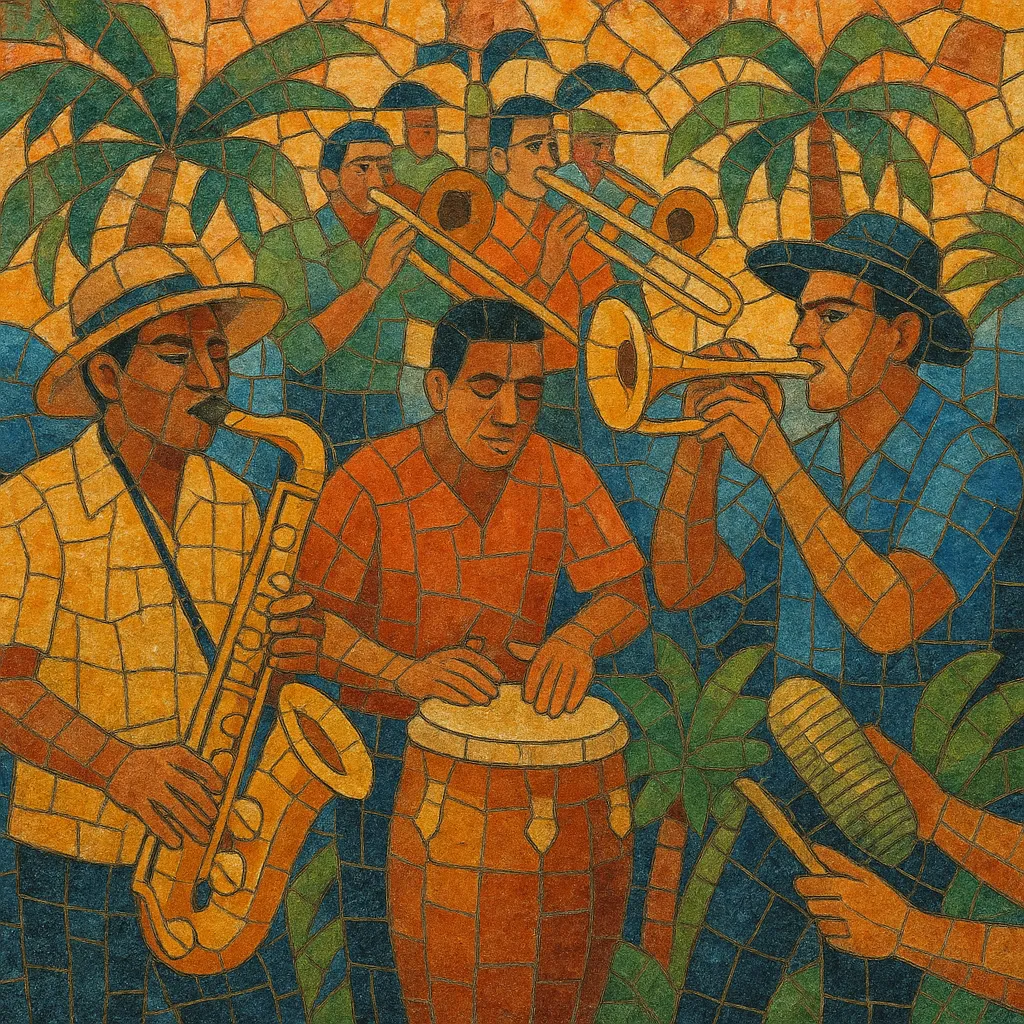
Cumbia salvadoreña is the Salvadoran regional style of cumbia, characterized by bright brass-led arrangements, dance‑forward grooves, and catchy call‑and‑response choruses. Unlike the Colombian roots of cumbia that foreground gaitas and hand drums, the Salvadoran sound is typically performed by full "orquesta" bands with trumpets, trombones, saxophones, congas, güiro, timbales, bass, guitar, and keyboards.
Tempos are generally upbeat (around 95–115 BPM), melodies are concise and memorable, and arrangements often include brief horn mambos and breaks designed for the dance floor. Lyrics lean toward romance, local pride, and fiesta culture, frequently referencing towns, patron-saint festivals, and everyday life in El Salvador and the Salvadoran diaspora.
Cumbia reached El Salvador via Colombian recordings and touring bands in the mid-20th century. Local musicians adapted its 2/4 rhythm to the "orquesta" format already popular through mambo and big-band tropical music. By the early 1960s, ensembles like Orquesta Internacional Hermanos Flores began crafting a distinctly Salvadoran take—upbeat, horn-forward, and made for town fairs and dance halls.
During the 1970s, Salvadoran cumbia solidified its identity: brisk tempos, tight horn riffs, and percussion that blended congas, timbales, cowbell, and güiro. Bands such as Orquesta Internacional San Vicente and Hermanos Flores became fixtures at fiestas patronales and on radio, helping standardize the style across the country.
Migration expanded the genre’s audience to the United States (especially the D.C. area, Los Angeles, and Houston), where Salvadoran communities kept the dance tradition alive. "Chanchona" ensembles from eastern El Salvador—featuring violins, guitars, acoustic bass, and güira—popularized rustic, string‑driven cumbia variants, documented internationally by labels and cultural institutions. Meanwhile, orquesta groups modernized with keyboards and slicker production.
Today, cumbia salvadoreña thrives both in traditional orquesta format and in hybrid studio productions that borrow from salsa, merengue, and digital cumbia aesthetics. Classic bands continue to tour, while younger acts and DJs incorporate the Salvadoran horn language and rhythmic feel into modern arrangements, sustaining the genre across generations and borders.

